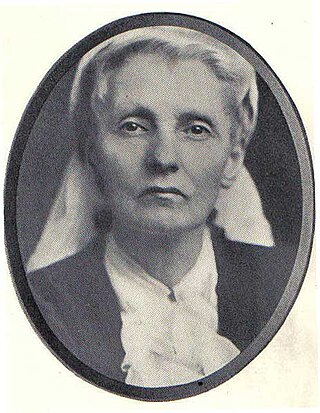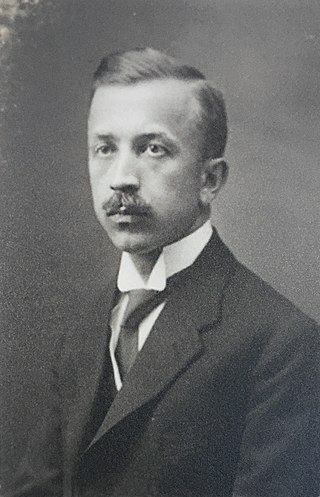Semiotics is the systematic study of sign processes (semiosis) and meaning making. Semiosis is any activity, conduct, or process that involves signs, where a sign is defined as anything that communicates something, usually called a meaning, to the sign's interpreter. The meaning can be intentional, such as a word uttered with a specific meaning; or unintentional, such as a symptom being a sign of a particular medical condition. Signs can also communicate feelings and may communicate internally or through any of the senses: visual, auditory, tactile, olfactory, or gustatory (taste). Contemporary semiotics is a branch of science that studies meaning-making and various types of knowledge.
Charles William Morris was an American philosopher and semiotician.
Biosemiotics is a field of semiotics and biology that studies the prelinguistic meaning-making, biological interpretation processes, production of signs and codes and communication processes in the biological realm.

Eero Aarne Pekka Tarasti, is a Finnish musicologist and semiologist, currently serving as Professor Emeritus of Musicology at the University of Helsinki.

Victoria, Lady Welby, more correctly Lady Welby-Gregory, was a self-educated British philosopher of language, musician and watercolourist.

In the semiotic theories of Jakob von Uexküll and Thomas A. Sebeok, umwelt is the "biological foundations that lie at the very center of the study of both communication and signification in the human [and non-human] animal". The term is usually translated as "self-centered world". Uexküll theorised that organisms can have different umwelten, even though they share the same environment. The term umwelt, together with companion terms Umgebung and Innenwelt, have special relevance for cognitive philosophers, roboticists and cyberneticians because they offer a potential solution to the conundrum of the infinite regress of the Cartesian Theater.

Thomas Albert Sebeok was a Hungarian-born American polymath, semiotician, and linguist. As one of the founders of the biosemiotics field, he studied non-human and cross-species signaling and communication. He is also known for his work in the development of long-time nuclear waste warning messages, in which he worked with the Human Interference Task Force to create methods for keeping the inhabitants of Earth away from buried nuclear waste that will still be hazardous 10,000 or more years in the future.
Decoding, in semiotics, is the process of interpreting a message sent by an addresser (sender) to an addressee (receiver). The complementary process – creating a message for transmission to an addressee – is called encoding.
Marcel Danesi is Professor of Semiotics and Linguistic Anthropology at the University of Toronto. He is known for his work in language, communications and semiotics and is Director of the program in semiotics and communication theory. He has also held positions at Rutgers University (1972), University of Rome "La Sapienza" (1988), the Catholic University of Milan (1990) and the University of Lugano.

John Deely was an American philosopher and semiotician. He was a professor of philosophy at Saint Vincent College and Seminary in Latrobe, Pennsylvania. Prior to this, he held the Rudman Chair of Graduate Philosophy at the Center for Thomistic Studies, located at the University of St. Thomas (Houston).
International Association for Semiotic Studies is the major world organisation of semioticians, established in 1969.
This is a list of works published by Umberto Eco.

Jesper Hoffmeyer was a professor at the University of Copenhagen Institute of Biology, and a leading figure in the emerging field of biosemiotics. He was the president of the International Society for Biosemiotic Studies (ISBS) from 2005 to 2015, co-editor of the journal Biosemiotics and the Springer Book series in Biosemiotics. He authored the books Biosemiotics: An Examination into the Signs of Life and the Life of Signs and Signs of Meaning in the Universe and edited A Legacy for Living Systems: Gregory Bateson as Precursor to Biosemiotics.
Genevieve Vaughan is an American expatriate semiotician, peace activist, feminist, and philanthropist, whose ideas and work have been influential in the intellectual movements around the Gift Economy and Matriarchal Studies. Her support also contributed heavily to the development of the global women’s movement.

Augusto Ponzio is an Italian semiologist and philosopher.
The following outline is provided as an overview of and topical guide to semiotics:

Giuseppe Di Giacomo is an Italian philosopher and essayist.
Ethnosemiotics is a disciplinary perspective which links semiotics concepts to ethnographic methods.

Ivan Sarailiev was a Bulgarian philosopher related to the school of pragmatism.; he finished his major book Pragmatism in 1938 quoting from Charles Sanders Peirce’s Collected Papers. Sarailiev was the first pragmatist in Eastern Europe and also a "very early pragmatist". He also introduced the idea of implied reader in his reception theory as early as in Savremennata nauka y religiata (1931).
Linguistic alienation is an inability to give expression to experience through language or a feeling that language is incomplete or fails to capture experience. The term can be used to describe how language reduces experiences, emotions, feelings, and other indescribable phenomena into a limited and regulatory modality. Linguistic alienation has been described as a pervasive phenomenon, yet has not received sustained consideration.









